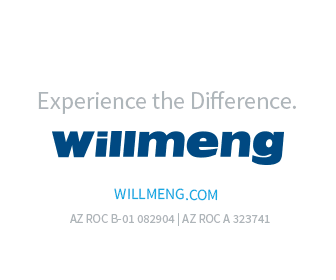Cradle to Cradle: Understanding Whole Life Carbon

Complex calculations go into determining the environmental impact of construction.
Increasingly, consumers can make buying decisions based on carbon footprint. That recent airline ticket or running shoes purchase? Sportswear companies and airlines now list carbon emissions alongside prices. The built environment is following suit. However, distilling the carbon footprint of a structure from the extraction of building materials to their eventual disposal is a layered calculation. The simple equation is that the sum of embodied carbon plus operational carbon equals whole life carbon.
According to MIT’s Center for Real Estate, approximately 40% of emissions in the U.S. can be attributed to the built environment. Decarbonization could greatly reduce those impacts. Although the real estate industry has tended to focus on energy savings, whole life carbon demonstrates how an overarching perspective might best achieve sustainability.
A Focus Shift from Energy Usage
From one perspective, attention to energy usage and efficiency could provide the optimal path to sustainable practices. The Department of Energy reports that it is “essential to reduce energy consumption in buildings in order to meet national energy and environmental challenges” as the sector accounts for 76% of all electricity use.
Others, however, embrace a more holistic perspective. A report from Sacramento, California-based Integral Group notes that focusing solely on annual energy use “is significantly inaccurate and significantly incomplete.” Measuring electrical usage can be inaccurate depending on the time of day or night. Also, an energy-usage metric ignores the climate impact of building attributes such as structure and mechanical systems during operation. Focusing on whole life carbon allows the industry to widen its environmental lens.
Embodied Carbon
Whole life carbon includes the embodied carbon in building materials. During production, materials progress from raw extraction, to processing, to product manufacture, to sales distribution, to transport to the building site. Reducing emissions at any of these stages helps.
Mass timber buildings are an example of a reduced footprint. Timber is harvested from fast-growth forests, then laminated. Because the wood weighs less than steel or concrete, it takes less energy to transport. It arrives at the construction site in a partially pre-assembled state, which along with its lighter weight allows for shallower pile driving and faster construction. Thus, embodied carbon relates to capital investment. When translated to lower construction costs or quicker construction (and occupancy), choosing carbon-smart materials can make economic sense.
Carbon-Smart Estimating
Quantitative tools such as calculators and industry labels help assess carbon. The Embodied Carbon in Construction Calculator (EC3), developed by a collaboration of nearly 50 industry partners, focuses on the “upfront supply chain emissions of construction materials.” With decentralized information and no standard units of measurements, analyzing various materials becomes an exercise in frustration. The EC3 tool eliminates some of that, although not every material has such a label.
The calculator pulls data from construction estimates or BIM (building information modeling) and matches it to third-party Environmental Product Declarations (EPD) to display procurement information in a straightforward format. Owners, architects and contractors can decide — line item by line item — where they might make better sourcing decisions. With 15,000 users, the free, cloud-based tool has gained so much traction that contractors seek employees versed in this methodology.
Labels such as EPDs are like nutritional food labels, except that they are even more detailed. According to UL, an EPD “tells the life cycle story of a product in a single, comprehensive report. The EPD provides information about a product’s impact upon the environment, such as global warming potential, smog creation, ozone depletion and water pollution.”
Anthony Hickling, managing director at the Carbon Leadership Forum, says that certain material groups, such as concrete, have embraced the label system. A comparison via EC3 “helps professionals understand what higher-performing concrete looks like, and can use that knowledge to influence decision-making,” says Hickling.
Operational Carbon
The operational aspect of carbon, although less visible, provides long-term emission savings. Its life stages include use, maintenance and refurbishment. Green roofs, such as that at San Francisco’s California Academy of Sciences, collect rainwater, restore habitat, increase open space, reduce the heat island effect and reduce water run-off. As a bonus, the wildflowers and array of rooftop plants make the building aesthetically pleasing.
Over a typical 50-year lifespan, the operational impact of a building rises relative to embodied carbon. Triple net leases allow incentives to be split, although there might be a disincentive for an owner to pursue operational carbon savings. If a landlord makes a substantial capital improvement that reduces operating expenses over a long lifetime — such as a radiant floor that reduces heating, venting and air conditioning costs — the tenant benefits directly with reduced expenses. Unless the landlord can market the sustainable building at a higher rent or attract tenants who desire this type of space, the landlord has less economic incentive to pay for lighter carbon materials if they are more expensive than traditional ones.
Emi LaFountain, regional sustainability manager at Turner Construction, notes this barrier to lighter carbon footprints: the lack of shared information between the budgets for capital expenditures and operating expenditures. Lender requirements and a focus on imminent construction expenses grab more of the spotlight than the long-term operating budgets. LaFountain believes that owner-occupied campuses present an opportunity to enable more efficient design adoptions of lower life-cycle carbon impact.
Behemoth glass buildings exemplify aesthetic choice over performance. Innovations such as vacuum-insulated glass, suitable for smaller glass spans, provide an alternative. Traditional double- or triple-paned glass often contains a space filled with argon or other gas. Vacuum-insulated glass, however, eliminates the internal gas and air trapped in the panes. Its high efficiency results in long-term expense reduction due to the lack of reflection and less heat generated. According to LaFountain,incorporating the expenses that a landlord and tenant do not pay should be part of the investment decision.
Disposal and Reuse
Although disposal and reuse are commonly associated with the end of a building’s life cycle, a truly circular economy demands attention at the start of design and construction. TRUE (Total Resource Use and Efficiency) calls itself the “first zero waste certification program,” whose goal is to divert 90% of waste from landfills, incinerators and the environment over a period of 12 months.
Construction sites demonstrate techniques for such disposal and reuse. For instance, dumpsters labeled “wood,” “cardboard,” “mixed debris” and “container recyclables” allow for on-site sorting that eases downstream diversion. Upstream efforts involve recycling and reuse. The 400,000-square-foot California Academy of Sciences insulates its walls with recycled jeans in lieu of fiberglass, an apt use considering that California’s gold seekers in the 1800s created the denim pants.
Culture Change
Hickling notes that the “Buy Clean” legislation underway in California, New York, Colorado and other states will require public projects to report carbon percentages for specific materials used. Soon, entities will need to meet baseline standards for carbon emissions.
“As we design for the climate of today, we also need to design for the climate of tomorrow,” LaFountain says, and pay particular attention to MEP so that systems are not undersized to counteract any potential effects from global warming.
Alice Devine is the author of the award-winning “Suite Deal, the Smart Landlord’s Guide to Leasing Real Estate,” and a lecturer at UC Berkeley’s Haas School of Business.







